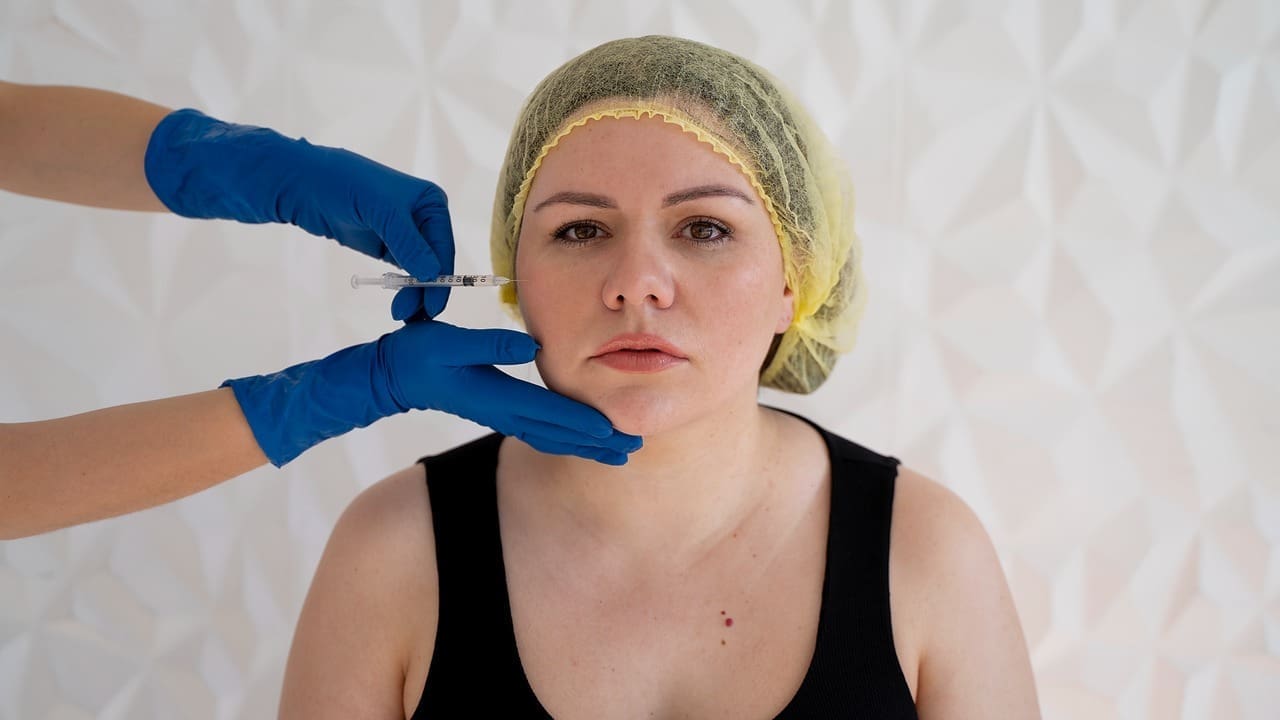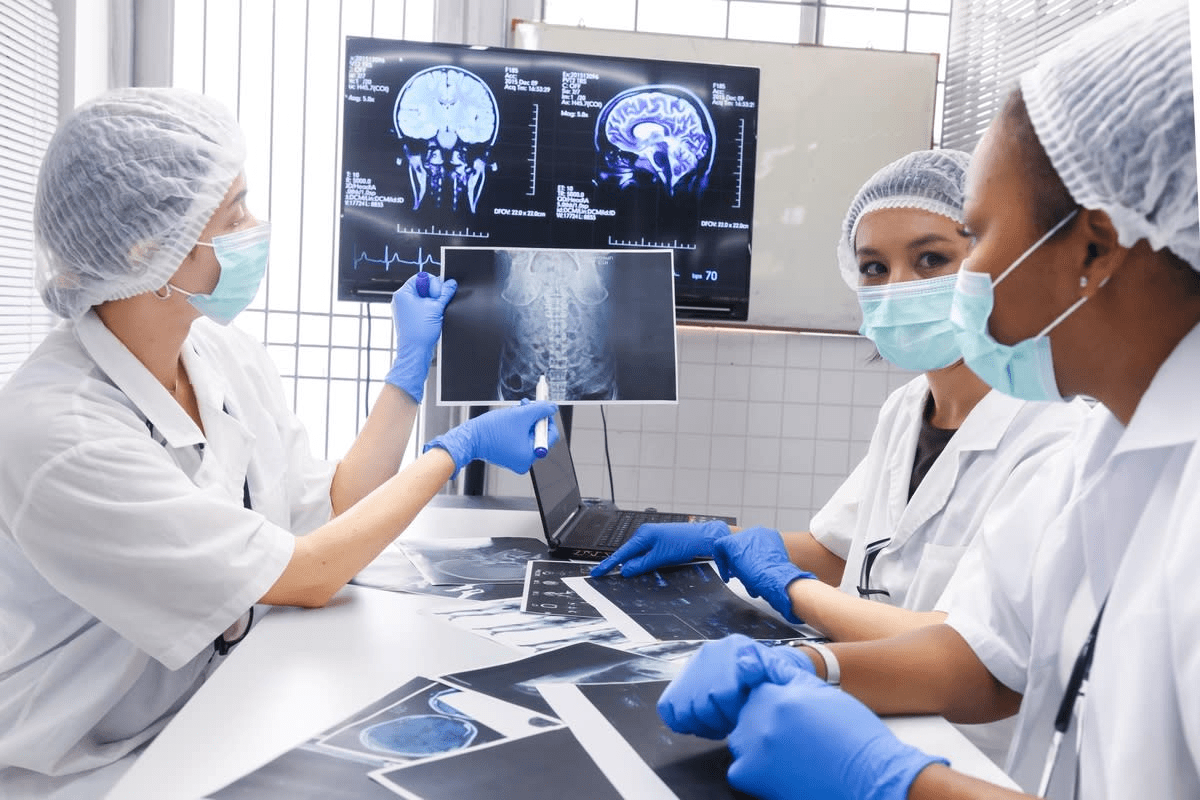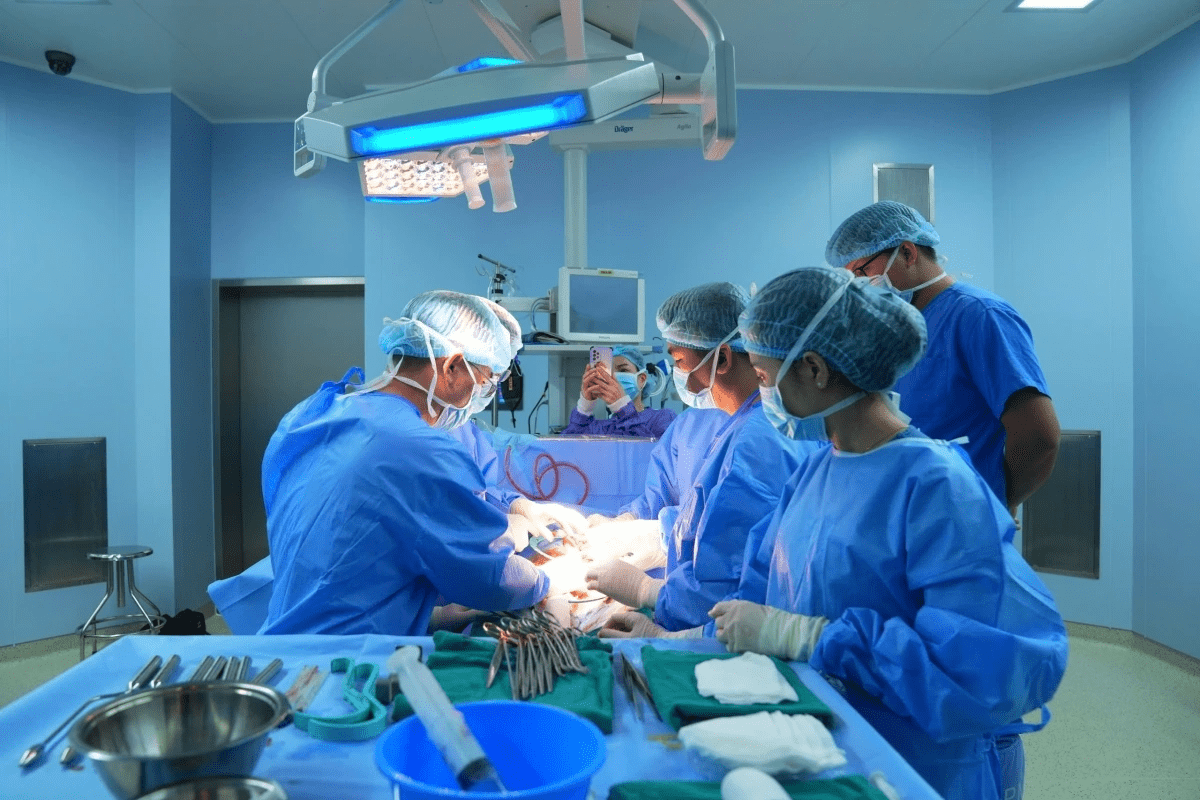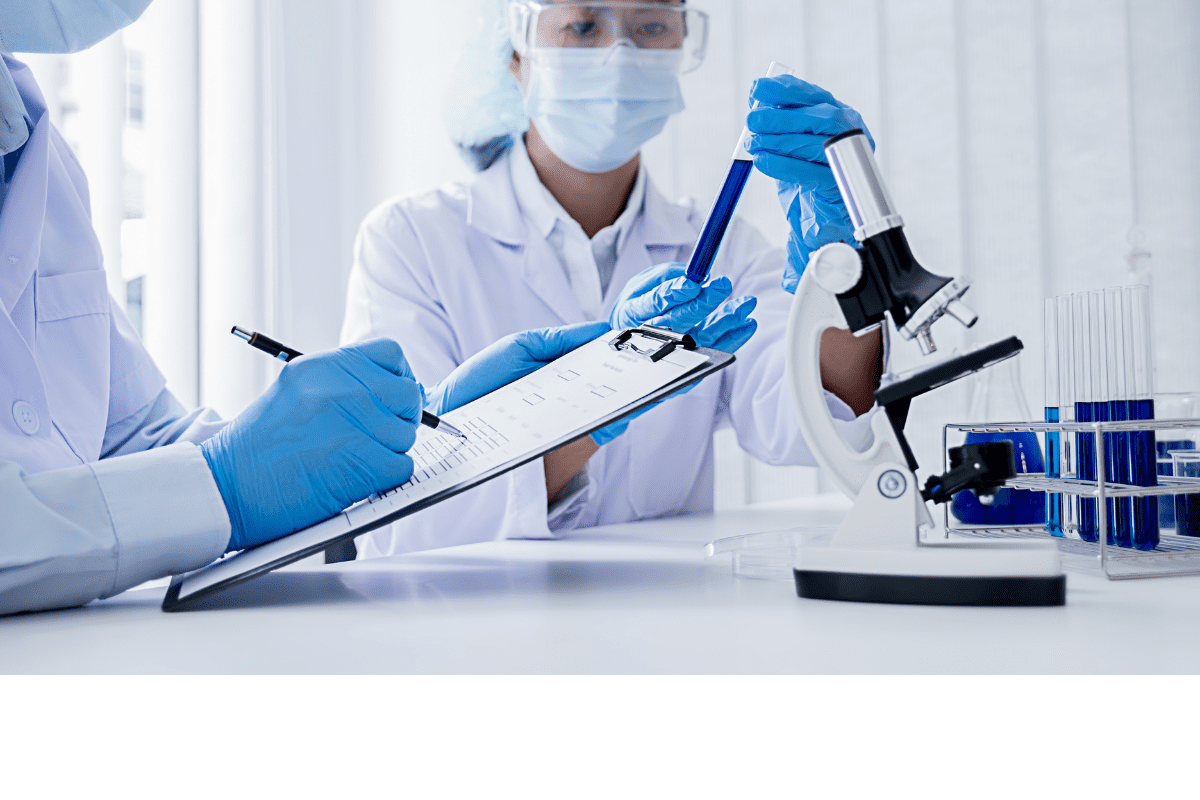Last Updated on November 26, 2025 by Bilal Hasdemir

When you’re diagnosed with basal cell carcinoma, you want a treatment that’s both precise and gentle. This is true, even more so for areas like the face. At Liv Hospital, we focus on personalized care and new solutions that meet your unique needs.
We know Mohs surgery is great for removing skin cancers. But it’s not the best choice for everyone. So, we look into evidence-based alternatives like superficial radiation therapy (SRT) and photodynamic therapy (PDT). This way, we offer you a variety of effective treatments.
Key Takeaways
- Multiple evidence-based alternatives to Mohs surgery are available for treating basal cell carcinoma.
- Superficial radiation therapy (SRT) and photodynamic therapy (PDT) are among the effective alternatives.
- Personalized care is key in treating skin cancers, even in sensitive areas.
- Liv Hospital is dedicated to providing innovative and tailored treatment options.
- Patients have different needs and preferences when it comes to skin cancer treatment.
Understanding Basal Cell Carcinoma and Traditional Treatment Options
It’s important to know about basal cell carcinoma and its treatments. Basal cell carcinoma (BCC) is the most common skin cancer. It starts in the skin’s basal cell layer and can look and grow differently.
What is Basal Cell Carcinoma?
Basal cell carcinoma grows slowly and rarely spreads. But, if not treated, it can damage the skin and change its look. Many things can cause BCC, like genetics, UV rays, and skin conditions.
The Gold Standard: Mohs Micrographic Surgery
Mohs micrographic surgery is the top choice for treating BCC, mainly for high-risk or hard-to-reach tumors. It removes the tumor and checks it right away to make sure it’s all gone.
Why Patients Seek Alternative Treatments
Even though Mohs surgery works well, some people look for other options. They might worry about scars, surgery risks, or just prefer something else. These alternatives can be less invasive and might look better.
| Treatment Option | Cure Rate | Cosmetic Outcome |
|---|---|---|
| Mohs Micrographic Surgery | 99% | Excellent |
| Superficial Radiation Therapy (SRT) | 95% | Good |
| Photodynamic Therapy (PDT) | 80-90% | Fair |
Knowing about these choices is key to deciding how to treat basal cell carcinoma.
When to Consider Alternatives to Mohs Surgery for Basal Cell Carcinoma
Mohs surgery is very effective for basal cell carcinoma. But, there are times when other treatments are better. Every patient is different, and what works for one might not work for another.
Medical Contraindications for Surgery
Some medical conditions make surgery too risky. For example, people with bleeding disorders or on blood thinners face more dangers. In these cases, non-surgical treatments are safer.
Anatomical Considerations
The tumor’s location is very important. Tumors in areas that are sensitive or important for looks might need special care. Non-surgical treatments can help keep the area looking and working better.
Patient Preferences and Quality of Life Factors
What the patient wants is also key. Some might want to avoid surgery or quick recovery. We look at these wishes when choosing non-surgical options that improve their life quality.
Let’s look at why some choose non-surgical options:
| Treatment Factor | Mohs Surgery | Alternative Treatments |
|---|---|---|
| Risk of Complications | Higher for patients with certain medical conditions | Lower risk for patients with medical contraindications |
| Cosmetic Outcome | Generally good, but depends on tumor location | Can offer better cosmetic results, even in sensitive areas |
| Recovery Time | Typically longer due to surgical nature | Often shorter, depending on the alternative treatment chosen |
Superficial Radiation Therapy (SRT)
Superficial Radiation Therapy (SRT) is a top choice for treating skin cancer. It’s great for Basal Cell Carcinoma and doesn’t require surgery. SRT uses low-energy radiation to kill cancer cells, making it perfect for shallow basal cell carcinomas.
How SRT Works for Treating Skin Cancer
SRT sends precise radiation to the tumor, keeping healthy tissue safe. This method boosts treatment success and cuts down on side effects. It’s a favorite among patients for these reasons.
The 95% Cure Rate: Evidence and Studies
Studies show SRT is very effective against non-melanoma skin cancers, like BCC. It has a 95% cure rate in some cases. For more info on SRT, check out https://xstrahl.com/nmsc-myrna/.
Ideal Candidates for SRT Treatment
SRT is best for those who can’t have surgery or prefer not to. It’s also great for tumors in areas where looks matter a lot.
Recovery Process and Cosmetic Outcomes
Recovering from SRT is easy, with few side effects. Patients usually see good results, with little scarring. This is a big plus for those worried about how they’ll look after treatment.
Photodynamic Therapy (PDT)
Photodynamic Therapy (PDT) is a non-invasive way to treat Basal Cell Carcinoma. It uses a light-sensitive drug and light to kill cancer cells.
The Science Behind PDT for Skin Cancer
PDT starts with applying a light-sensitive drug to the skin. Then, a special light is used to activate it. This creates oxygen that kills cancer cells. PDT is precise, targeting cancer cells without harming healthy skin.
Treatment Protocol and Patient Experience
The PDT process includes preparing the skin, applying the drug, and then using the light. Patients might feel some pain during the light treatment. But, PDT is non-invasive, making it a good choice for those who don’t want surgery.
Success Rates for Different BCC Types
PDT’s success varies based on the BCC type and thickness. Here’s a table showing success rates for different BCC types:
| BCC Type | Success Rate |
|---|---|
| Superficial BCC | 80-90% |
| Nodular BCC | 70-80% |
| Thick BCC | 50-70% |
Limitations and Side Effects to Consider
PDT is a promising option but has its limits. Side effects include redness, swelling, and light sensitivity. Following post-treatment instructions is key to reducing these side effects. Also, PDT might not work for all BCC types, like thick ones or those in hard-to-reach places.
Topical Medications as Alternatives to Mohs Surgery for Basal Cell Carcinoma
For those looking for non-invasive treatments, topical medications are a good choice. They are great for superficial lesions. This makes them a less invasive option that can be as effective as surgery in some cases.
Imiquimod (Aldara): Mechanism and Efficacy
Imiquimod, also known as Aldara, is a cream that boosts the body’s immune system. It fights cancer cells. Studies show it can clear up to 80% of superficial basal cell carcinoma, depending on the treatment.
5-Fluorouracil (Efudex): Application and Results
5-Fluorouracil, or Efudex, is a topical medication for basal cell carcinoma. It’s a chemotherapy agent that kills cancer cells. Applying it twice a day for weeks can clear superficial BCCs effectively.
Treatment Protocols and Duration
The treatment for imiquimod and 5-fluorouracil involves applying the medication to the affected area. This is done for several weeks. The exact time depends on the BCC’s size, thickness, and location, and the patient’s health.
Clearance Rates for Superficial BCCs
Topical medications show promising results for superficial basal cell carcinomas. Imiquimod can clear up to 80% of superficial BCCs. 5-Fluorouracil also works well, but results can vary based on the treatment and patient factors.
It’s important to talk to a healthcare professional about treatment. The success of topical medications depends on the BCC type, thickness, and patient characteristics.
Cryosurgery for Basal Cell Carcinoma Treatment
Cryosurgery is a new way to treat basal cell carcinoma. It freezes cancer cells, killing them. This method is good for some types of basal cell carcinoma and is quick and not very painful.
Destroying Cancer Cells through Freezing
Cryosurgery uses cold to kill cancer cells. Liquid nitrogen is applied to freeze the tumor. After it dies, the tumor falls off.
The Cryosurgery Procedure and Recovery
The cryosurgery process is simple and done in a clinic. Liquid nitrogen is applied a few times to the tumor. Recovery is quick, with little pain and fast healing.
Evaluating Success Rates and Recurrence Risks
Cryosurgery works well for some basal cell carcinomas, like small ones. But, there’s a chance the cancer could come back. It’s important to have follow-up checks.
Cosmetic Outcomes and Considerations
Cryosurgery can look good, keeping the area around the tumor looking normal. But, how it looks depends on the tumor’s size and where it is.
| Treatment Aspect | Cryosurgery Details |
|---|---|
| Procedure | Application of liquid nitrogen to freeze cancer cells |
| Recovery Timeline | Generally short, with rapid healing |
| Success Rates | Promising for superficial or small BCCs |
| Cosmetic Outcomes | Favorable, with preservation of surrounding tissue |
Laser Surgery and Curettage Options
For those with basal cell carcinoma, laser surgery and curettage are good alternatives. They are great for specific types of BCC. They also help with recovery and look better afterward.
CO2 Laser Ablation Techniques
CO2 laser ablation uses a laser to kill cancer cells. It’s good for shallow BCCs and leaves little to no scar. This makes it a top choice for cosmetic reasons.
Electrodessication and Curettage (ED&C)
ED&C removes the tumor with a curette and then kills any left-over cells with electricity. It works well for small, shallow BCCs. It has a high success rate if done right.
Ideal Candidates and Contraindications
Laser surgery and ED&C are good for patients with small BCCs or those who can’t have big surgeries. But, they might not work for bigger or deeper tumors.
Healing Process and Long-term Results
Both treatments heal fast, with little scarring. The long-term success is high for the right patients. This means most people can expect good results.
| Treatment | Ideal Candidates | Cure Rate |
|---|---|---|
| CO2 Laser Ablation | Superficial BCCs | 90% |
| ED&C | Small, superficial BCCs | 95% |
Special Considerations for Facial and Nasal BCCs
Facial and nasal basal cell carcinomas are tricky to treat because they’re visible and important for our looks and breathing. Doctors must find a way to remove the cancer without harming how we look or feel.
Comparing Alternatives for Sensitive Facial Areas
When treating face BCCs, it’s key to think about how each treatment will affect our looks. Superficial Radiation Therapy (SRT) and Photodynamic Therapy (PDT) are good because they can help avoid scars and keep more tissue.
SRT is great for face BCCs because it works well and doesn’t leave big scars. PDT is good for surface BCCs and can be done again if needed. It also helps avoid scarring.
Treatment Options for Nasal Basal Cell Carcinomas
Nasal BCCs are hard to treat because of the nose’s shape and its place on our face. Doctors need to pick treatments that work well but also keep our nose looking good and working right.
Mohs surgery is often the top choice for BCCs, but it might not be best for nose BCCs because it can cause big scars. Instead, SRT and topical treatments might be better because they can give better results for how our nose looks.
Balancing Efficacy and Cosmetic Outcomes
Getting the right treatment for face and nose BCCs means finding a balance. It’s about knowing how each treatment works and how it will affect our looks. This needs a deep understanding of all the options and what they can do.
Recurrence Rates by Treatment Type and Location
How often BCCs come back depends on the treatment and where the tumor is. For example, SRT works well for face BCCs, and creams like imiquimod are good for surface BCCs.
| Treatment Type | Recurrence Rate | Cosmetic Outcome |
|---|---|---|
| SRT | Low | Excellent |
| PDT | Moderate | Good |
| Topical Treatments | Variable | Good to Excellent |
Case Studies and Patient Experiences
Looking at real-life cases helps doctors understand how different treatments work for face and nose BCCs. It helps them make better choices for their patients.
For example, a person with a nose BCC treated with SRT might have a high success rate and little scarring. This greatly improves their life quality.
Conclusion: Making an Informed Decision About BCC Treatment
Patients facing basal cell carcinoma (BCC) have many treatment options, not just Mohs surgery. It’s key to know about alternatives to Mohs surgery to make a smart choice. We’ve looked at treatments like Superficial Radiation Therapy (SRT), Photodynamic Therapy (PDT), and more.
Every BCC treatment has its own good points and things to think about. Patients need to think about the BCC’s type and where it is, their health, and what they prefer. By looking at these factors and knowing about each treatment’s effects and side effects, patients can pick the best option for them.
We want patients to be involved in their treatment choices. Giving them all the info they need helps them make informed decisions that fit their needs. Our aim is to treat BCC effectively while keeping patients’ quality of life high.
FAQ
What are the alternatives to Mohs surgery for basal cell carcinoma?
Alternatives include superficial radiation therapy (SRT), photodynamic therapy (PDT), and topical treatments like imiquimod and 5-fluorouracil. Cryosurgery and laser surgery or curettage, such as CO2 laser ablation and electrodessication and curettage (ED&C), are also options.
Is there an alternative to Mohs surgery that is non-invasive?
Yes, SRT and PDT are non-invasive. Topical medications are also a non-invasive choice for superficial basal cell carcinomas.
What is the cure rate for superficial radiation therapy (SRT) in treating basal cell carcinoma?
SRT has a cure rate of about 95% in some studies. It’s a very effective treatment for certain basal cell carcinomas.
Can photodynamic therapy (PDT) be used for all types of basal cell carcinoma?
PDT works best for superficial basal cell carcinomas. Its success depends on the BCC type and thickness. It may not work as well for thicker or more aggressive tumors.
What are the benefits of using topical medications for basal cell carcinoma treatment?
Topical treatments like imiquimod and 5-fluorouracil are non-surgical. They can be effective for superficial BCCs. They work by boosting the immune system or killing cancer cells, leading to good cosmetic results.
How does cryosurgery work in treating basal cell carcinoma?
Cryosurgery freezes cancer cells to kill them. It’s a quick procedure with a short recovery time. It’s a good option for some basal cell carcinomas.
Are laser surgery and curettage effective alternatives to Mohs surgery?
Yes, laser surgery and curettage, like CO2 laser ablation and ED&C, can be effective for some BCCs. The choice depends on the tumor size, location, and patient preference.
What are the considerations for treating basal cell carcinoma on the face or nose?
Treating BCC on the face or nose focuses on both effectiveness and cosmetic outcomes. Options like SRT, PDT, and topical treatments may be chosen to preserve appearance and quality of life.
How do I choose the best treatment for my basal cell carcinoma?
Choosing the right treatment involves looking at the BCC type, location, health, and personal preferences. It’s important to talk to a healthcare provider to find the best approach for you.
What is the difference between electrodessication and curettage (ED&C) and Mohs surgery?
ED&C removes the tumor with a curette and then uses electrodessication to kill remaining cells. Mohs surgery is more precise, making it better for high-risk or cosmetically sensitive areas.
Are there any alternatives to Mohs surgery near me?
The availability of Mohs surgery alternatives varies by location. Talking to local healthcare providers or dermatologists can help find suitable options in your area.
References
- National Center for Biotechnology Information (NCBI) / PMC: https://pmc.ncbi.nlm.nih.gov/articles/PMC6502306/
- National Center for Biotechnology Information (NCBI) / PMC: https://pmc.ncbi.nlm.nih.gov/articles/PMC7787325/








